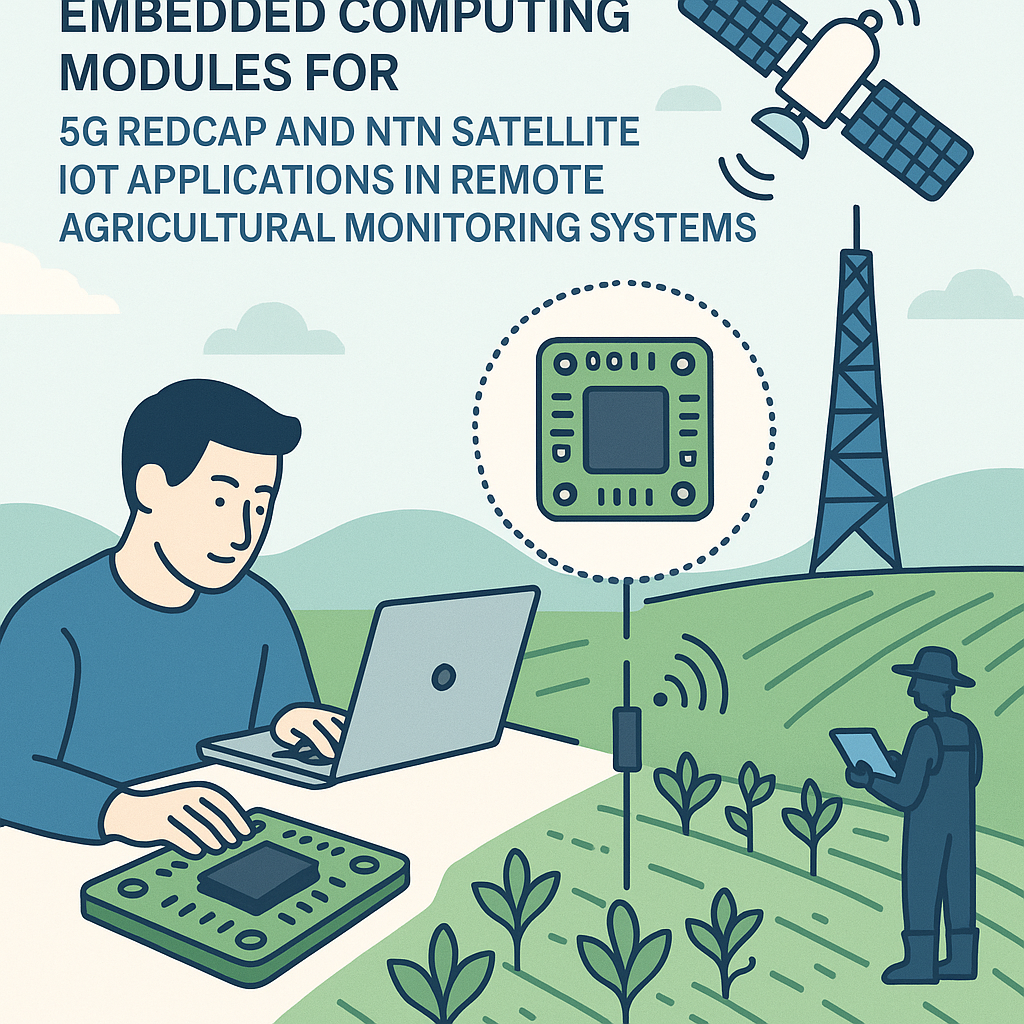Introduction
As the world increasingly turns to innovative technologies for agricultural monitoring, the development of ultra-low-power embedded computing modules has become crucial. These modules are particularly significant for 5G RedCap (Reduced Capability) and NTN (Non-Terrestrial Networks) satellite IoT applications. They enable efficient data collection in remote agricultural settings, offering solutions that optimize resource management and enhance productivity.
The Importance of Ultra-Low-Power Computing
Ultra-low-power computing modules are designed to operate with minimal energy consumption, which is vital for IoT devices deployed in remote areas where power sources may be limited. The benefits of these computing modules include:
- Extended Battery Life: Reducing power consumption prolongs the operational life of devices deployed in the field.
- Cost-Effectiveness: Lower energy needs translate into reduced operational costs.
- Environmental Impact: Energy-efficient solutions help reduce the carbon footprint of agricultural practices.
5G RedCap: A Game Changer for IoT Applications
5G RedCap technology is tailored for IoT devices that require lower data rates while maintaining reliable connectivity. This technology supports a wide range of applications, especially in agricultural monitoring, where large amounts of sensor data must be transmitted efficiently. Key features of 5G RedCap include:
- Lower Latency: Ensures real-time data transmission, crucial for timely decision-making in agriculture.
- Improved Coverage: Expands connectivity options in rural and remote areas.
- Scalability: Supports a vast number of devices, which is essential for large-scale agricultural operations.
NTN Satellite IoT: Bridging the Connectivity Gap
Non-Terrestrial Networks (NTN) use satellite technology to provide connectivity where traditional networks cannot reach. This is particularly beneficial in agriculture, where farms may be located in isolated regions. The advantages of NTN satellite IoT include:
- Global Coverage: Satellites can provide connectivity across vast and remote regions.
- Reliability: Offers a stable connection even in adverse weather conditions.
- Data Transmission: Capable of handling large volumes of data from multiple sensors simultaneously.
Applications in Remote Agricultural Monitoring
The integration of ultra-low-power embedded computing modules with 5G RedCap and NTN satellite IoT technology has led to significant advancements in remote agricultural monitoring systems. Some key applications include:
- Soil Monitoring: Sensors can provide real-time data on soil moisture, pH levels, and nutrient content.
- Crop Health Monitoring: Drones equipped with cameras and sensors can monitor crop health and detect diseases early.
- Weather Stations: Localized weather data collection helps farmers make informed decisions regarding planting and harvesting.
- Livestock Tracking: GPS-enabled devices can monitor the location and health of livestock in expansive fields.
Challenges and Considerations
Despite the numerous benefits, the development and deployment of these technologies come with challenges that must be addressed:
- Cost of Implementation: Initial investment in technology can be high for farmers.
- Infrastructure Requirements: Adequate infrastructure is needed to support new technologies.
- Data Security: Safeguarding sensitive data collected from agricultural operations is paramount.
The Future of Agricultural Monitoring
The future of agricultural monitoring is poised for transformation through the combination of ultra-low-power embedded computing and advanced connectivity solutions. As technology continues to evolve, we can expect:
- Enhanced Data Analytics: Improved algorithms for analyzing data collected from IoT devices.
- Integration with AI: AI-driven insights can lead to predictive analytics for better crop management.
- Broader Adoption: Increased accessibility and adoption of these technologies among farmers of all sizes.
Conclusion
The development of ultra-low-power embedded computing modules for 5G RedCap and NTN satellite IoT applications represents a significant step forward in remote agricultural monitoring systems. By leveraging these technologies, farmers can enhance productivity, optimize resource management, and ultimately contribute to a more sustainable agricultural future. As connectivity continues to improve and costs decrease, the potential for these innovative solutions in agriculture will only grow.



